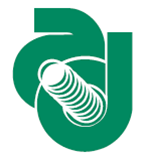Speaker
Dr
Lorenzo Uplegger
(Fermilab)
Description
Diamond sensors are studied as an alternative to silicon sensors to withstand the high radiation doses that are expected in future upgrades of the pixel detectors for the SLHC. Diamond pixel sensors are intrinsically radiation hard and are considered as a possible solution for the innermost tracker layers close to the interaction point where current silicon sensors cannot cope with the harsh radiation environment.
An effort to study possible candidates for the upgrades is undergoing using the Fermilab test-beam facility, FTBF, where diamonds and 3D silicon sensors have been studied. Using a CMS pixel-based telescope built and installed at the FTBF facility we are studying charge collection efficiencies for unirradiated and irradiated devices bump-bonded to the CMS PSI46 pixel readout chip. A description of the test-beam effort and preliminary results on diamond sensors will be presented.
Authors
Jennifer Ngadiuba
(INFN Milano)
Dr
Lorenzo Uplegger
(Fermilab)
Co-authors
Ada Solano
(INFN Torino)
Alan Prosser
(Fermilab)
Alex Krzywda
(Purdue University)
Ashish Kumar
(SONY Buffalo)
CM Lei
(FErmilab)
Daniela Bortoletto
(Purdue University)
Dario Menasce
(INFN Milano)
Enver Alagoz
(Purdue University)
Frank Jensen
(Colorado University)
Gino Bolla
(Purdue University)
Ilya Osipenkov
(Texas A&M)
Jean Marie Brom
(Strasbourg, IPHC)
Jeff Andresen
(Fermilab)
John Chramowicz
(Fermilab)
John Cumalat
(Colorado University)
Kirk Arndt
(Purdue University)
Lalith Perera
(Mississippi University)
Luigi Moroni
(INFN Milano)
Maria Margherita Obertino
(INFN Torino)
Mayur Bubna
(Purdue University)
Nhan Tran
(Fermilab)
Ozhan Koybasi
(Purdue University)
Ping Tan
(Fermilab)
Richard Brosius
(SONY Buffalo)
Ryan Rivera
(Fermilab)
Simon Kwan
(Fermilab)
Stefano Terzo
(INFN Milano)
Steve Wagner
(Colorado University)

